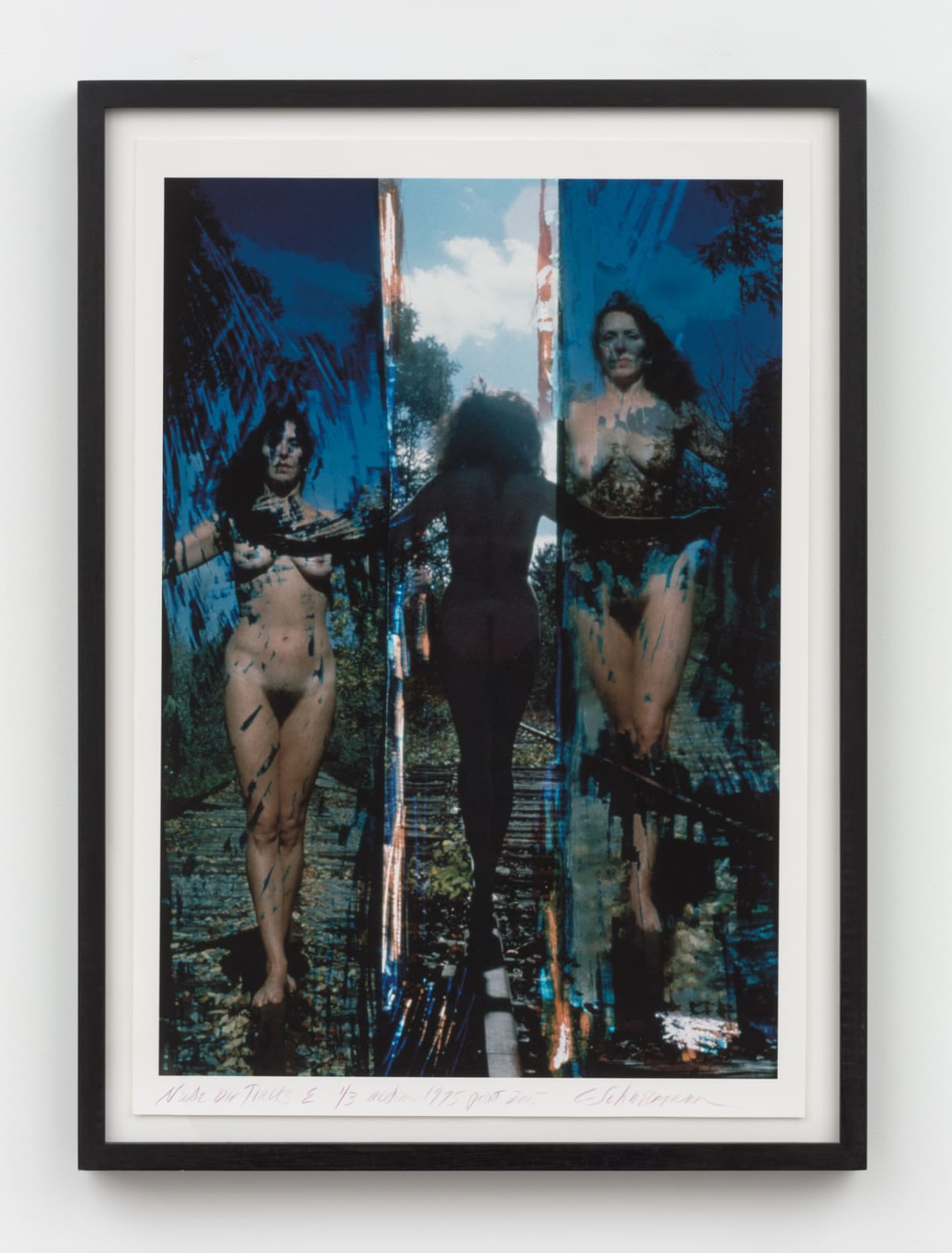
Carolee Schneemann
Nude on Tracks (E), 1975/2005
Archival giclée print on Hahn Rag paper with pigmented inks
Framed: 73.7 x 53.3 cm
29 x 21 in
29 x 21 in
Edition 1 of 3
Nude on Tracks (E) is a photographic print with pigmented inks, recording a 1975 action in which Schneemann, as the title suggests, posed nude on railroad lines. The work is...
Nude on Tracks (E) is a photographic print with pigmented inks, recording a 1975 action in which Schneemann, as the title suggests, posed nude on railroad lines. The work is part of a series of five image, and in each of these images, Schneemann’s
work can be understood as an attempt to find new ways of viewing the naked body by placing it within a landscape as an integral part of the visual field.
In an interview with the Guardian in 2014, Schneemann contextualises her use of nude self-portraiture within the framework of art trends in the 60s and 70s, such as pop art, in which “the female nude was painted like an automobile. Mechanised. There’s no lubricity, no fleshiness. It’s a very cool position – still empowering male representation. Pop and commercialism seem as if they were meant for each other. Andy [Warhol] welcomed everything, socialites, arms dealers. I started out as a landscape painter. That’s much more my sensibility.” This sensibility is directly reflected in the Nude on Tracks series, which explores the relations between the female nude, vehicular transport and the natural landscape.
work can be understood as an attempt to find new ways of viewing the naked body by placing it within a landscape as an integral part of the visual field.
In an interview with the Guardian in 2014, Schneemann contextualises her use of nude self-portraiture within the framework of art trends in the 60s and 70s, such as pop art, in which “the female nude was painted like an automobile. Mechanised. There’s no lubricity, no fleshiness. It’s a very cool position – still empowering male representation. Pop and commercialism seem as if they were meant for each other. Andy [Warhol] welcomed everything, socialites, arms dealers. I started out as a landscape painter. That’s much more my sensibility.” This sensibility is directly reflected in the Nude on Tracks series, which explores the relations between the female nude, vehicular transport and the natural landscape.